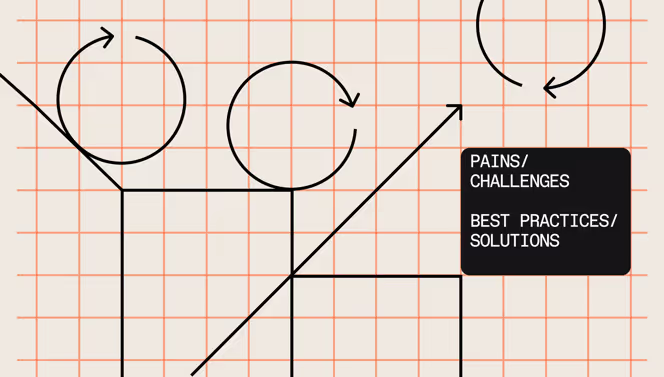Change management in HR: Leading successful transitions

Eager to simplify the way you work and boost your employee experience?

Change is never easy.
And while that corporate restructuring or company merger might be necessary, that doesn’t mean it’s any less stressful for employees.
Change management in HR helps ensure transition periods go as smoothly as possible for employees. An effective change management strategy prepares them for disruptions and new ways of working.
Below, we offer a step-by-step guide to building a winning change management plan. In periods of organizational change, use our best practices to ensure your team thrives, rather than taking a productivity nosedive.
What is change management in HR?
Used by HR, change management strategies are processes designed to help employees through organizational shifts. Examples of disruptive events include shifting to a hybrid work model or the company merging with another business. Even small changes like having to use a new software package can cause friction that teams must navigate.
As the bridge between leadership and employees, HR is best placed to prepare employees for such shifts. An effective change management approach requires clear communication, understanding, and support. When an organizational update dramatically alters employees’ workflow, teams may also require training.
Why is change management important for HR leaders?
HR leaders are responsible for helping employees adapt with confidence. A well-structured change management plan streamlines that process, reducing employee uncertainty through clearly set expectations.
Here are some benefits of an HR change management plan:
- Retention and engagement: Periods of change can be stressful, potentially leading to people questioning their future at the company. Management strategies reassure employees so they’re ready to embrace new workflows.
- Alignment with organizational goals: For HR, managing change is about meeting new company objectives with as little friction for employees as possible. By supporting workers through these shifts, everyone can smoothly adapt to the new status quo.
- Reduced risk and costs: If employees make mistakes amid the transition, there could be legal or financial ramifications. A change management plan identifies potential risks and outlines structured solutions.
- Competitive edge: For organizational changes resulting from technological or industry developments, your company won’t be the only one rushing to adapt. An effective, HR-led change management plan helps teams get up and running quicker than competing companies.
- Human side of change: Confusion around transition periods can be anxiety-inducing for employees, but with the help of HR, change doesn’t have to be scary. HR teams support employees throughout organizational change, enhancing the employee experience through clear and effective communication.
How HR can manage change effectively: Step-by-step guide
By managing change, human resources teams can streamline the transition process and provide employees with structured guidance.
Follow these five steps to draft an effective management plan.
Step 1: Assess the impact of the change
Organizational change can seriously upset employees’ workflow. After all, learning how to work with a new team or use that new piece of software takes time and energy. Larger changes can even affect the employee experience and workplace culture.
Rather than dealing with the fallout, identify the potential impacts of change ahead of time. Communicate to employees what’s changing and why, as well as how their work processes might evolve. This gives them time to prepare and adapt, minimizing any drops in productivity.
Step 2: Build a change management plan
Once the impacts of the change have been identified, begin drafting a plan to mitigate them. An effective change management plan includes timelines, planned training to support internal shifts, and clear communication strategies. Try to think of ways to make the transition as smooth as possible for employees.
Step 3: Communicate with transparency
Any change is going to result in confusion and anxiety, so clear, ongoing communication is key. Transparent communication, such as clarifying any updates to job descriptions and responsibilities, helps employees feel more confident and stable.
Step 4: Equip managers and leaders
Employees look to team managers for support and assistance during periods of change. Train managers to become change ambassadors by keeping them in the loop and offering support. Equip them with the “why” and “how” of a change, so they can address concerned employees’ questions.
Step 5. Support employees with tools and training, and facilitate feedback
Additional training, software demonstrations, and educational initiatives can ease employee concerns and help them adapt faster.
Where possible, allow workers to share feedback on the change process. Open, honest dialogue allows employees to feel heard and respected. Their feedback will also highlight any particularly tricky parts of the transition, which serves as helpful data for future change management processes.
Best practices for change management in HR
To ensure things go smoothly, here are some change management best practices to follow.
Align change with company values and goals
When communicating the reason behind a change, try to link it to the company’s values. For example, a corporate restructure might result in a better customer offering, while adopting a new technology means staying competitive in an evolving marketplace. This won’t always be possible, but when circumstances allow, it’ll help employees understand and accept the transition.
Leverage employee feedback
Employee feedback can help determine if a change management strategy is effective and well communicated. Workleap Officevibe streamlines the process of collecting and responding to this feedback. Use Officevibe to rapidly draw on insights and measure employee engagement throughout transition periods.
Provide ongoing learning opportunities
Organizational change often requires employees to take on new responsibilities or learn how to use new technology. Where possible, ease their burden by providing structured opportunities for learning and development with simple, timely, and empowering lessons and courses.
Recognize progress and celebrate milestones
Rapid change is taxing for employees, adding a layer of stress on top of their normal work. Maintain employee engagement and satisfaction by celebrating change milestones. For example, a newly formed team might deserve a shout-out after working well together to deliver a challenging project. Recognizing employees’ hard work keeps spirits high during challenging transition periods.
Review and adapt regularly
Even the best change management strategies experience unexpected twists and turns. Continually check in with employees about any roadblocks and proactively tackle issues they report. Small, constant improvements streamline the process and ensure an effective transition.
Real-world examples of change management
Here are three common organizational change scenarios and the role human resource management plays in mitigating their impact:
- Digital transformation: New technologies and software can radically alter how workers go about their day-to-day. To accelerate digital transformation while avoiding friction, HR can structure product demos and offer how-to tutorials. This additional training brings employees up to speed faster.
- Corporate restructuring: A company may decide to boost efficiency by restructuring its internal structure or operations. This can lead to roles changing, teams being shuffled around, and even layoffs. To ease any confusion or tension, HR should focus on transparent two-way communication, fielding any employee questions. It may also be necessary to provide leaders with additional training on how to deal with internal resistance.
- Policy updates: Internal policy updates, to meet organizational goals or align with compliance initiatives, can dramatically reshape the workplace. Employees may experience a shift in their workflow that they don’t understand. To counter this, HR teams can request feedback via surveys, outline the reasoning behind the policy shift, and communicate why it’s occurring.
Drive successful change with Workleap
When employees understand why change is happening and how it impacts them, transitions are much smoother.
But successful change requires employee feedback. Understanding how employees feel with Workleap’s integrated feedback tools can streamline communication and accelerate transitions.
Discover how Workleap can help your HR team drive successful change. Request a demo to get started today.
FAQs
What is the purpose of HR when it comes to reducing employee resistance to change?
Resistance to change stems from uncertainty. HR teams help communicate change initiatives to employees and prepare them for any potential tension and upset. By clarifying what the change is, what the effects will be, and how it will alter their day-to-day, employees will feel more secure.
Why is communication important in change management?
Inconsistent communication or mixed messaging breeds uncertainty, as employees won’t know how change will affect them. By remaining transparent and leading with clear communication, HR teams can dispel any concerns and improve employee sentiment.
What tools help HR manage organizational change effectively?
Feedback tools allow employees to communicate points of tension. HR teams can use this data to continually refine any future management strategies. Learning and development platforms also support change management initiatives by educating employees on updates to their roles or responsibilities.
LEAD WITH CONFIDENCE
Streamline processes with our HR templates


%20(1).avif)


.avif)
.avif)



.avif)


.avif)

